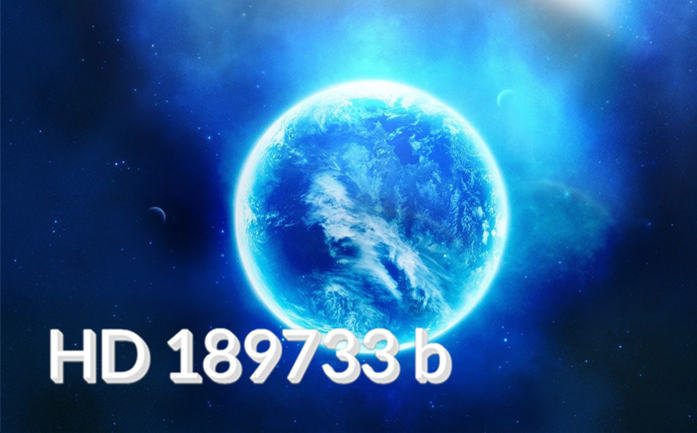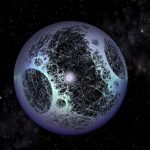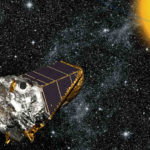Across the cosmic realms, a planet with a beguiling blue façade harbors cryptic secrets, inducing a spine-chilling sense of wonder. This celestial body is none other than HD 189733b, a world where beauty and peril coexist, evoking a sense of fear that is impossible to ignore. The azure appearance of HD 189733b might evoke thoughts of serene oceans on Earth; however, this blue hue is not a result of water. Instead, the planet’s atmosphere is laden with silicate particles, endowing it with a distinct color. In this blue realm, though, extreme climates and astonishing natural phenomena lurk beneath the surface.
This study aims to delve into the physical characteristics and atmospheric composition of HD 189733 b, exploring its similarities and differences in comparison to Earth. Through detailed spectroscopic analysis, temperature mapping, and examination of its atmospheric components, we seek to deepen our understanding of the planet’s formation and evolution, contributing valuable insights to the broader field of extrasolar planetary exploration. The research on HD 189733 b not only aids scientists in unraveling the mysteries of the cosmos but also provides crucial information for future endeavors focused on exploring the potential habitability of exoplanets beyond our solar system.
Detection and Discovery:
HD 189733 b, an exoplanet situated in the Vulpecula constellation approximately 64.5 light-years away from the Solar System, was first discovered by astronomers in France on October 5, 2005. The initial detection involved the observation of the planet’s transit across the face of its host star, HD 189733, using telescopes and Doppler spectroscopy techniques. This detection method allowed real-time radial velocity measurements, revealing the Rossiter–McLaughlin effect caused by the planet passing in front of its star. Subsequent photometric measurements confirmed the planet’s transit.
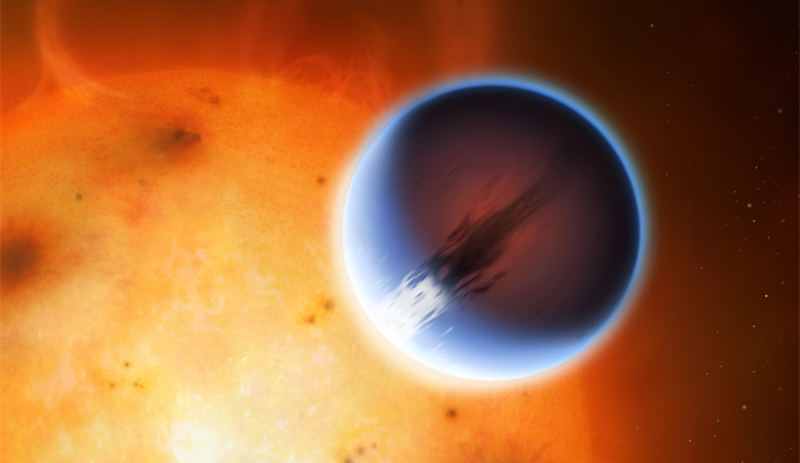
Basic Characteristics:
HD 189733 b boasts a mass approximately 11.2% higher than Jupiter and a radius 11.4% greater. It completes an orbit around its host star every 2.2 days at a remarkable orbital speed of 152.0 kilometers per second, classifying it as a hot Jupiter with unfavorable conditions for extraterrestrial life.
The planet’s atmospheric peculiarities have been extensively studied through various instruments, both ground-based and space-based, using high- and low-resolution techniques. The weather on HD 189733 b includes the remarkable occurrence of raining molten glass, a phenomenon established through close atmospheric observation.
Physical Characteristics and Atmosphere:
HD 189733 b exhibits a large photometric transit depth of approximately 3%, and its atmosphere has been directly spectroscopically observed. The planet is not oblate, lacks satellites with greater than 0.8 Earth radii, and does not possess a ring system.
The atmosphere, initially predicted as “pL class,” has been confirmed to contain carbon dioxide. Observations using the Spitzer Space Telescope in 2007 mapped the planet’s temperature emissions, revealing a temperature range and the presence of winds blowing at high speeds from the day side to the night side.
Weather and Rains of Molten Glass:
The deadly weather on HD 189733 b involves winds composed of silicate particles reaching speeds of up to 8,700 kilometers per hour. Observations have provided evidence of horizontally raining molten glass, presenting a unique and hazardous meteorological phenomenon on this distant exoplanet.
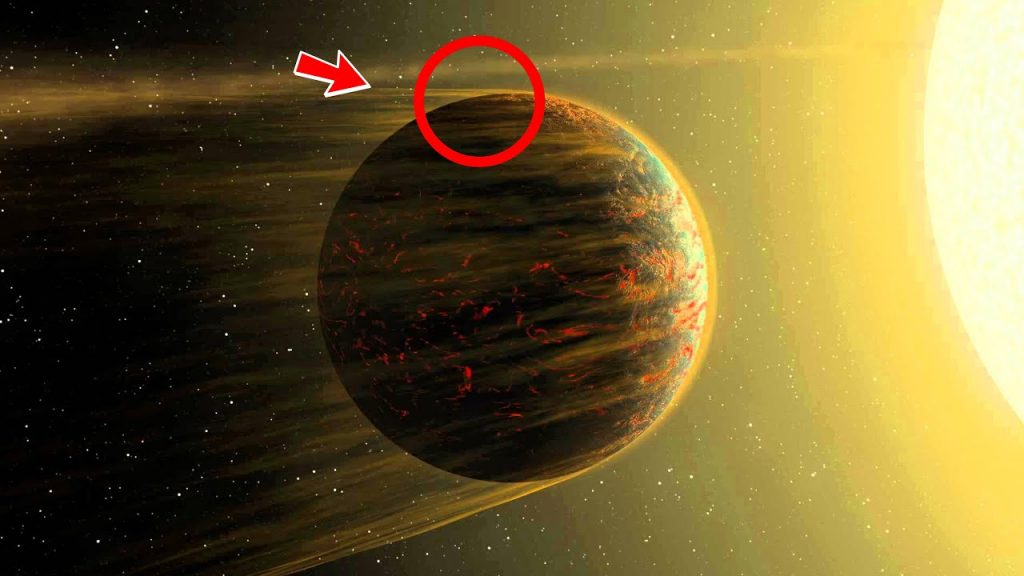
Analysis of Atmospheric Composition and Structure:
Atmospheric Observations: As the closest transiting hot Jupiter to Earth, HD 189733 b has been a focal point for detailed observations. Scientists utilized high- and low-resolution instruments from both ground-based and space-based platforms to study its atmosphere. The observations revealed unique weather patterns on the planet, including rain made of molten glass. HD 189733 b was the first exoplanet to have its thermal map constructed, possibly through polarimetry, determining its overall color (deep blue). Its transit was also observed in the X-ray spectrum, confirming the presence of carbon dioxide in its atmosphere.
Atmospheric Components: In July 2014, NASA announced the discovery of very dry atmospheres on three exoplanets, including HD 189733 b, orbiting Sun-like stars. Scientists are particularly interested in the atmospheric components such as water vapor and methane, studying their magnitudes and their impacts on planetary characteristics.
Visible Light Color: In 2008, a group of astrophysicists successfully detected and monitored the visible light of the planet using polarimetry. This method indicated a significantly higher albedo in blue light compared to red light, likely due to Rayleigh scattering and molecular absorption in the red. The blue color of the planet was further confirmed in 2013.
Infrared Spectrum: On February 21, 2007, NASA released news that the Spitzer Space Telescope had measured detailed spectra from HD 189733 b, providing crucial clues about the atmospheric composition.
X-ray Spectrum: In July 2013, NASA reported the first observations of the planet’s transit studied in the X-ray spectrum. It was found that the planet’s atmosphere blocks three times more X-rays than visible light.
Evaporation Phenomenon: In March 2010, transit observations using HI Lyman-alpha found that the planet is evaporating at a rate of 1-100 gigagrams per second, with the detection of the extended exosphere of atomic hydrogen. HD 189733 b is the second planet after HD 209458 b for which atmospheric evaporation has been detected.
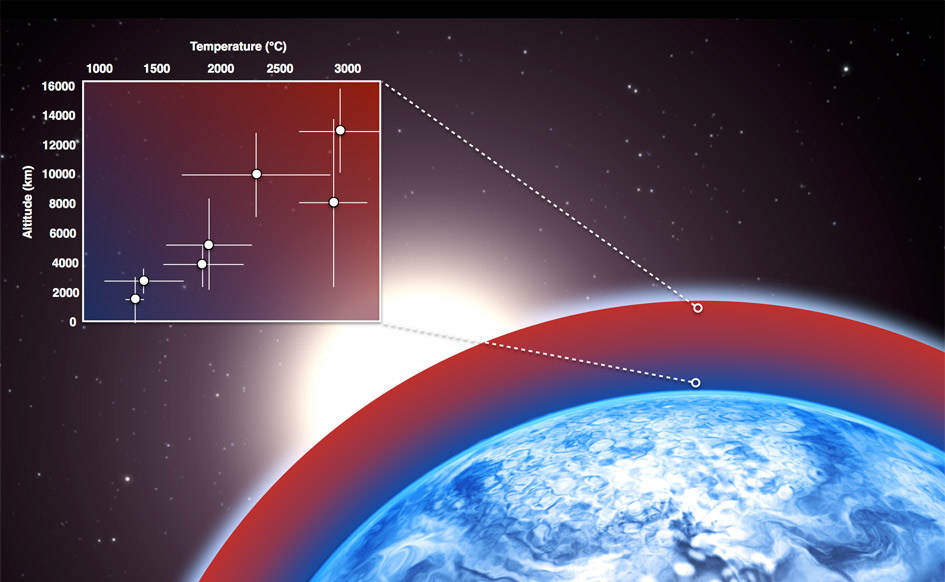
Comparison with Earth’s Atmosphere:
Similarities:
- Atmospheric Observations: Similar to Earth, scientists closely observed the atmosphere of HD 189733 b using high and low-resolution instruments, both from ground-based and space-based observations.
- Spectroscopic Studies: HD 189733 b, as the first exoplanet with a thermal map, had its overall color (deep blue) confirmed through polarimetry and X-ray spectroscopic observations. These studies resemble the methods used on Earth to observe spectra and meteorological phenomena.
- Atmospheric Composition: Similar to Earth, scientists detected substances such as water vapor, oxygen, methane, and carbon dioxide in the atmosphere of HD 189733 b.
- Climate Dynamics: The atmospheric dynamics of the planet exhibit unique weather phenomena, including horizontally raining molten glass, akin to the climatic diversity observed on Earth.
Differences:
- Color and Atmospheric Components: The blue color of HD 189733 b, caused by silicate particles in the atmosphere, differs from Earth, where the blue color primarily originates from nitrogen and oxygen molecules in the atmosphere.
- Extreme Weather Conditions: In comparison to Earth, HD 189733 b experiences extreme weather conditions, with daytime temperatures reaching nearly 2000 degrees Celsius and wind speeds of up to 5,400 miles per hour, potentially leading to sideways raining of glass.
- Atmospheric Dynamics: HD 189733 b is likely tidally locked, constantly facing its parent star, which contrasts with Earth’s natural rotation, causing day and night cycles.
Impacts:
- Understanding of Exoplanets: Observations of HD 189733 b provide scientists with an opportunity to study the atmosphere and weather of planets beyond our solar system, expanding our understanding of terrestrial-like planets.
- Revelation of Climate Diversity: The meteorological diversity of HD 189733 b highlights the potential extremes in planetary climates, offering additional insights into the conditions for extraterrestrial life beyond Earth.

Orbital Dynamics and Planetary Formation:
Orbital Characteristics of HD 189733 b:
The orbital features of HD 189733 b have sparked considerable interest among scientists. This exoplanet is located approximately 64.5 light-years away from its parent star, HD 189733, and completes an orbit around it in just 2.2 days, with an orbital speed of 152.0 kilometers per second. This rapid orbital motion categorizes it as a “hot Jupiter,” being both close to its parent star and having a short orbital period. The swift orbit raises questions about its connection to the processes of planetary formation and evolution.
Discussion on Planetary Formation Theories:
The unique properties of HD 189733 b have led scientists to explore possible theories of planetary formation. Here are some aspects that may explain its distinctive characteristics:
- Mass and Radius: HD 189733 b has a slightly larger mass than Jupiter and a greater radius, suggesting a connection to the accumulation and distribution of material during its formative stages. Accretion and collisions during the planet’s formation may have shaped its mass and size.
- Orbital Evolution: During planetary formation, orbital evolution plays a crucial role in determining the final position and characteristics of the planet. HD 189733 b may have undergone interactions with its parent star, such as tidal interactions, influencing its current orbital location.
- Atmospheric Evolution: The composition and evolution of the planetary atmosphere are key factors in its unique properties. Observations indicate the presence of water vapor, oxygen, methane, and carbon dioxide in the atmosphere of HD 189733 b, potentially linked to the sources of material during planetary formation and atmospheric evolution.
- Star-Planet Interaction: Interactions between the planet and its parent star may influence the properties of HD 189733 b. Factors such as stellar radiation and stellar winds during the planet’s formation could impact the planet’s atmosphere and orbit.
- Atmospheric Dynamics and Extreme Weather: The extreme weather phenomena on HD 189733 b, such as high temperatures and strong winds, may be related to its atmospheric dynamics. Unique climatic events in the planet’s atmosphere could be linked to the dynamic evolution during its formation.
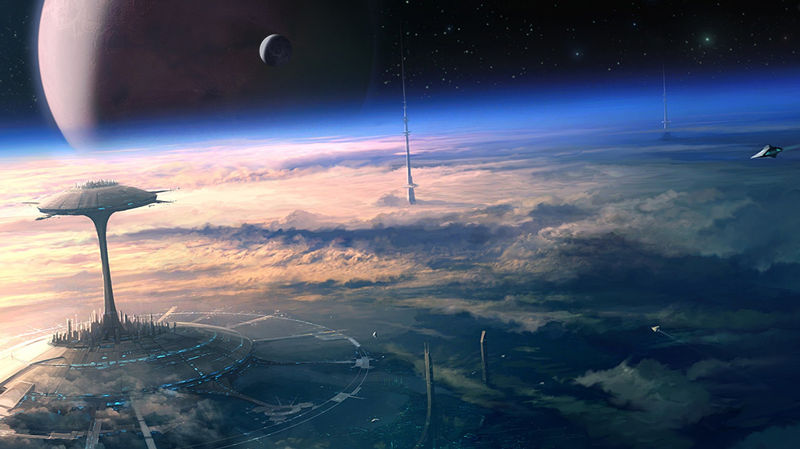
Analyzing the Prospects of Human Habitation on HD 189733 b:
When considering the possibility of human settlement on HD 189733 b, we are confronted with significant challenges and undeniable risks. Despite the exoplanet’s captivating features, such as its mesmerizing blue appearance and unique atmospheric phenomena, the extreme climate conditions make survival for humans exceedingly difficult.
Firstly, the daytime temperature on HD 189733 b approaches a scorching 2000 degrees Celsius, far beyond the range tolerable for Earth-based life. Coupled with intense wind speeds of up to 5400 kilometers per hour, any life form on the planet’s surface would face extreme environmental pressures.
Moreover, the occurrence of glass rains on the planet poses a considerable threat. These glass rains, comprised of silicate particles, could potentially move horizontally at high velocities, posing significant harm to any biological entities.
While scientists have detected traces of water vapor, oxygen, and organic compounds in the atmosphere of HD 189733 b, the extreme temperatures render the conditions unsuitable for human habitation. The atmospheric variations and exotic nature of the planet make it more suitable for scientific exploration rather than serving as a new home for humanity.
Hence, although the visual appeal of HD 189733 b might evoke thoughts of humans seeking new habitats in the cosmos, the harsh climate and extreme environmental conditions render this idea more akin to science fiction than reality. Human survival and proliferation, given our current technological capabilities, remain more suited to Earth, our unique and irreplaceable home.
END:
The significance of HD 189733 b’s study lies in its role as a benchmark for atmospheric investigations of exoplanets. From confirming the presence of carbon dioxide and diverse atmospheric compounds to studying weather patterns featuring winds at 8,700 km/h and rains of molten glass, this exoplanet offers a unique laboratory for understanding extreme planetary conditions.
Furthermore, the detailed examination of HD 189733 b contributes to the broader field of exoplanet research, providing valuable data for refining theoretical models and advancing our comprehension of planetary formation and evolution.
Future Research Directions:
The exploration of HD 189733 b opens avenues for future research in several directions:
- Detailed Atmospheric Studies: Further investigations into the atmosphere of HD 189733 b can deepen our understanding of its composition, temperature variations, and the mechanisms behind its extreme weather phenomena.
- Exomoon Research: Despite inconclusive evidence, continued studies to explore the existence of exomoons around HD 189733 b could yield valuable insights into the broader diversity of planetary systems.
- Comparative Exoplanet Studies: Comparative studies with other exoplanets, especially those with similar characteristics, can provide a broader perspective on the factors influencing planetary evolution and atmospheres.
- Advancements in Observation Techniques: The development of advanced observational techniques, both ground-based and space-based, can enhance our ability to gather more precise data on distant exoplanets, refining our understanding of their physical and atmospheric properties.
In summary, HD 189733 b stands as a captivating subject that not only reveals the complexities of an alien world but also serves as a stepping stone for future discoveries, pushing the boundaries of our knowledge in planetary science.
More UFOs and mysterious files, please check out our YouTube channel: MysFiles
Andromedans Encounters: Reveal the history of humanity
